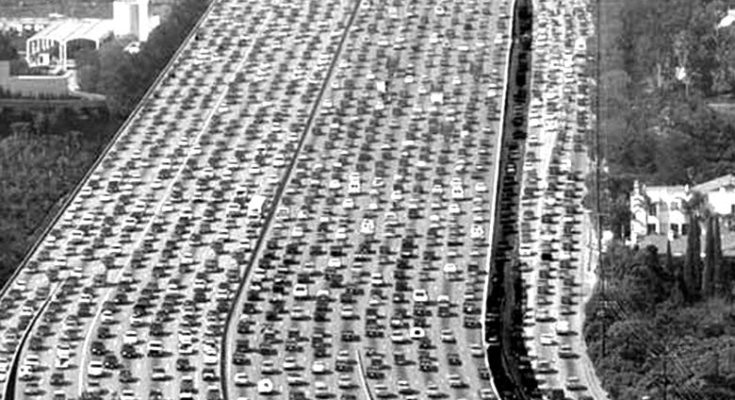
Traffic jam in Beijing, China.
Simon Wren-Lewis writes about the difference between how the neofiscalists and market monetarists view the solution to the world’s economic woes. Basically, neofiscalists are ready to use whatever is necessary. Market monetarists limit themselves to creative monetary policy. He uses a car analogy.
“To understand why I do get annoyed with MM, let me use another car analogy. We are going downhill, and the brakes do not seem to be working properly. I’m sitting in the backseat with a representative of MM. I suggest to the driver that they should keep trying the brake pedal, but they should also put the handbrake on. The person sitting next to me says “That is a terrible idea. The brake pedal should work. Maybe try pressing it in a different way. But do not put on the handbrake. The smell of burning rubber will be terrible. The brake pedal should work, that is what it is designed for, and to do anything else just lets the car manufacturer off the hookâ€
The car, as it is built, is actually working like it is supplied to work. All the brakes work.The problem with the car is much deeper.Â
Fiscal and monetary policies are both ineffective against the true problem… which is a declining demand for labor, weak real wages and low labor share.
The problem is that we are all stuck in a traffic jam on the highway. Everyone is going slow. And everyone is trying to get to the same destination. There is a bottleneck slowing down traffic. Our economies have more engine power, but the we are forced to go slow.
Neither the brakes, nor the handbrake solve the problem. The solution is not to stop the car. You are in stop-and-go traffic. Even all the cars around you (other countries) are having the same problem. Even if you managed to stop the car, someone would crash into you from behind.
Neither fiscal spending nor monetary policy can move the car faster when stuck in a traffic jam. Neither will increase the deeper problem of weak labor.

